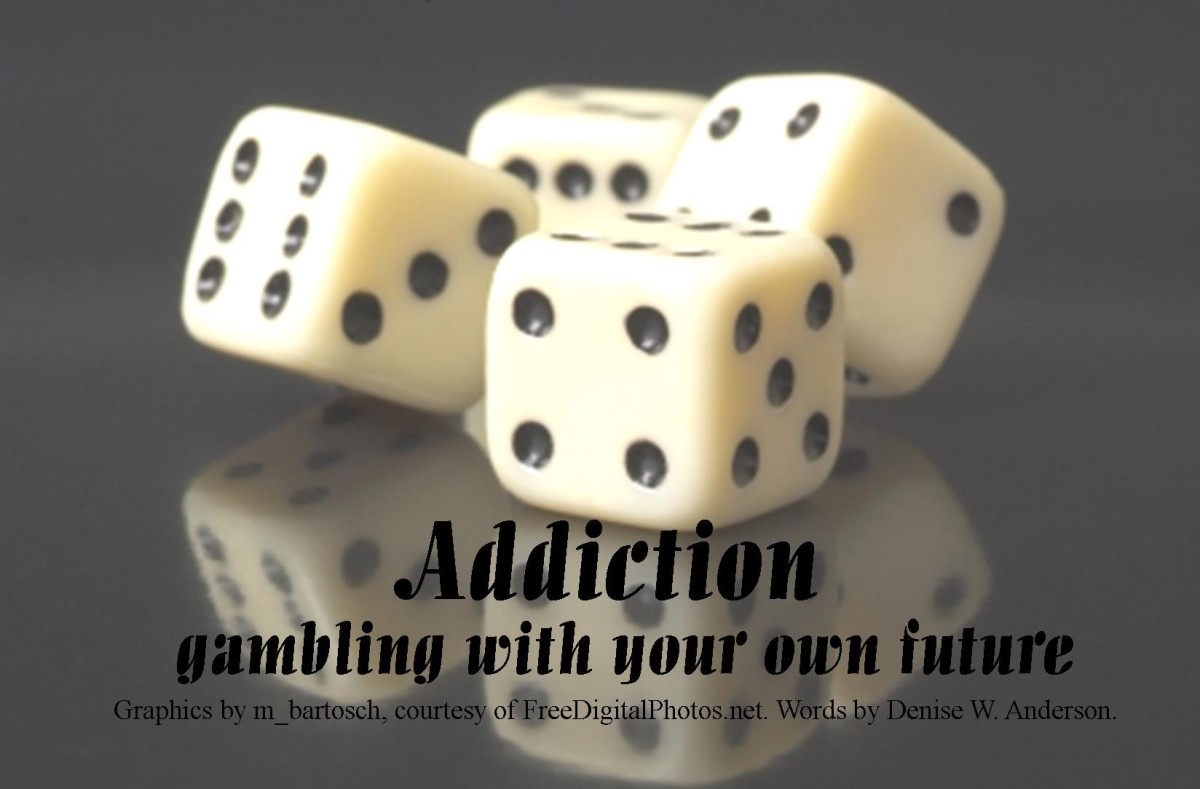Boost Your Emotional Health- How to be Emotionally Healthy
Why do you have to boost your emotional health?
Eastern medicine has respected the close connection between our body, mind and spirit for a thousand years. But it is only quite recently that the Western medicine has shifted its paradigm and has begun to see that our emotional health is directly linked to our physical health.
Daniel Goleman, author of the bestselling book “Emotional Intelligence” says that your emotional health also shapes your ability to succeed “out there.” Your "EQ" is a more accurate predictor of your ability to "succeed" in life than your IQ, a phenomenon he refers to as "emotional literacy."
The Story of the Two Women
Meet Cindy, a fifty five year old woman, single, unmarried is obsessed with eating the right kind of food and cooking it the healthy way. She also makes sure she gets a large amount of exercise, forgoing a ride in the car and walking several kilometers from her home to work and back home.
Then there is Sharon, still in her fifties, also single and unmarried but has a happy disposition. She is not a stickler for eating all the right kinds of food and occasionally indulges in sweets or red meat. As for exercise, she makes sure she joins her group of friends who take nature walks, swimming in the pool in a friend’s house or gardening.
“You can close your eyes to the things you do not want to see, but you cannot close your heart to the things you do not want to feel.”

What do you think showed up in their blood tests results?
When their blood tests arrived, Cindy was surprised to see that her cholesterol was still high. Unhappy with the results, she continued to grumble about her tired body, aching muscles or the red spots which appeared recently on her legs. The next thing she did was to refuse invitation to parties with the intention to control her cholesterol. And she is off to consult an allergy specialist!
Sharon, on the other hand sees her results and beamed with pride. Her results were normal!
This is just a sample of how emotional health affects physical health. I also noted that Sharon had an attitude of gratitude, finding delight in the things that she does and enjoying a close relationship with family and friends. Cindy on the other hand was known to be a complainer about anything and everyone and a loner. She tends to push people away with her negativity.
REFLECTION: Are you like Sharon or Cindy?
HOW DO YOU BOOST YOUR EMOTIONAL HEALTH?
1. Name Your Feelings
When asked “how do you feel?” most of us answer, “I’m okay!”
Are you really?
Develop your emotional literacy by being able to identify and express what you are feeling with specific feeling words. Being aware of what you feel is the first step to boost your emotional health. If you know what you feel, you will be empowered to deal with it.
Start with the words “I feel...”; “I feel rejected. I feel hurt. I feel thrilled.”
Here are some samples of feeling words. I encourage you to start expanding your feeling words. Ask yourself "how am I feeling?"
Expand Your Feeling Words Vocabulary: Sample of Feeling Words
Pleasant Feelings
| Unpleasant Feelings
|
|---|---|
Satisfied
| Annoyed
|
Tender
| Rebellious
|
Daring
| Powerless
|
Contemplative
| Pathetic
|
Free
| Dominated
|
Fascinated
| Resentful
|
Thrilled
| Sulky
|
Playful
| Vulnerable
|
Content
| Ashamed
|
At Ease
| Tense
|
These are just some of the feeling words. There are more!
“You cannot make yourself feel something you do not feel, but you can make yourself do right in spite of your feelings.”-Pearl S. Buck

2. Accept Your Feelings
If you have been raised to believe that emotions esp. negative ones are wrong, chances are deep inside you will feel guilty for feeling unpleasant emotions. You tend to dislike yourself for feeling that way.
But remember your feelings serve as your guide to where you are right now. Accept and acknowledge your emotions.
Try saying this. “I am feeling infuriated right now but I accept and love myself anyway.” Or “I am feeling discouraged and hopeless right now but I accept and love myself anyway.”
Furthermore, our feelings are human emotional needs expressed. We all have emotional needs which we humans share. What varies is the strength of each need per individual. For instance, a person may need to feel more important or useful; another may need to feel more secure and understood.
By being able to communicate one’s feelings, one is empowered to fulfill an emotional need. This allows us to receive emotional support and understanding just as we in turn can give emotional support and understanding to others. When a person’s natural emotional needs are met, a positive and healthier behavior follows.
Basic Emotional Needs of Humans
accepted
| confident
| fulfilled
|
appreciated
| forgiven
| heard
|
capable
| free
| helpful
|
important
| included
| listened to
|
loved
| needed
| noticed
|
productive
| useful
| recognized
|
respected
| safe
| secure
|
supported
| treated fairly
| valued
|
trusted
| understood
| competent
|
3. Deal with Your Feelings Positively
a. Avoid labeling people and situations.
A better approach would be to say what you feel. Remember you have to be able to distinguish what you think you might be feeling and what you truly feel. You are thinking of what you should be feeling when you start the sentence with “I feel as if, I feel like or I feel that…” Sample statements are, I feel like an idiot or I feel like teaching him a lesson or jumping off a cliff!
Be simple. Be clear. Say “I feel…(name the feeling)”
- Label: “You are an insensitive jerk.”
- Better Approach: “I feel sad and hurt.”
- Label: “This is stupid and utterly ridiculous!”
- Better Approach: “I feel frustrated.”
- Label: “You are a careless driver!”
- Better Approach: “I feel scared and tense when you drive like that.”
"Really? Gosh, but I feel playful today!"--ripplemaker

b. Take responsibility for your feelings.
Reflect on what is bothering you. Analyze why you are feeling an emotion when certain situations crop up. Look into your childhood, your beliefs and your unmet emotional needs. Consider your own feelings rather than focusing the actions or motives of others. Accepting responsibility helps you release resentment.
- Label: “You are trying to make me feel rejected, aren’t you?”
- Better Approach: I feel rejected and hurt.
- Label: “You seem to want to control me.”
- Better Approach: “I feel forced and trapped.”
- Label: “I act stupidly when I am around men.”
- Better Approach: “I feel unlovable and undesirable.”
The Emotional Guidance Scale by Abraham-Hicks
|
|---|
1. Joy/Appreciation/Empowered/Freedom/Love
|
2. Passion
|
3. Enthusiasm/Eagerness/Happiness
|
4. Positive Expectation/Belief
|
5. Optimism
|
6. Hopefulness
|
7. Contentment
|
8. Boredom
|
9. Pessimism
|
10. Frustration/Irritation/Impatience
|
11. Overwhelment
|
12. Disappointment
|
13. Doubt
|
14. Worry
|
15. Blame
|
16. Discouragement
|
17. Anger
|
18. Revenge
|
19. Hatred/Rage
|
20. Jealousy
|
21. Insecurity/Guilt/Unworthiness
|
22. Fear/Grief/Depression/Despair/Powerlessness
|
c. Move up the Emotional Guidance Scale one step at a time.
Abraham-Hicks shares about an emotional guidance scale with fear, grief, depression , despair and powerlessness being in the bottom of the scale and joy, appreciation, empowered, freedom and love being on top of the list.
The key is to find where you are in the scale. Your goal is to move up from where you find yourself and trying to think of thoughts that will help you make feel a little better. Shift your thoughts little by little.
Engage in meditation.
Pray or do deep breathing.
Share your feeling with a friend.
Do something to release the negative emotion.
Try to shift.
Don't be seemingly "possessed" by your mood. It’s taking each step, no matter if they are baby steps, until you reach the place of joy, freedom, empowered, love.
4. See situations as opportunities for personal growth.
Feelings can be used to set and achieve goals or make decisions. Our actions and behavior are motivated by feelings. What is important is the knowing that we can choose how we respond to an emotion. This empowers us because we stop being a victim and we feel in control. When we choose to take responsibility for meeting our emotional needs we also feel valued and less trapped or hopeless.
The Best Indicator
An emotionally healthy person is able to deal challenges and problems positively. Are these types of people incapable of being angry or irritated? Of course not. As mentioned above, unpleasant feelings are normal. But emotionally healthy persons are able to acknowledge what they feel, accept it and are empowered to make conscious decisions to respond in a better way.
Which of these is the most appropriate way to deal with anger?
"Knowing that I am loved is the best feeling of all. hehehe"--ripplemaker

The Answer: In studies, respondents have identified talking things over with the offender as the most appropriate way to deal with anger. This form of anger control is more appropriate than holding your anger in or expressing anger outwardly in ways that include physical assault on people or objects.
Want to answer the rest of the Human Emotions Quiz? Click here
In a Nutshell: Let me repeat this important lesson. An emotionally healthy individual is able to respond to her/his feelings in a positive way. The person feels fulfilled, happier and at peace. If you find yourself having a hard time dealing with your emotions, don’t be too hard on yourself. Know that it can be learned. Know that you can move up the Emotional Guidance Scale one step at a time, one experience at a time.
Know yourself! As you get to know yourself more, you increase self-knowledge. Emotional literacy helps an individual live life to the fullest and allows one to be in a happier state of being. I wish you continued joy.
By: Michelle Simtoco










